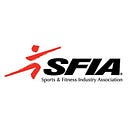China Tariff Deadline Extended
The U.S. currently has punitive tariffs of at least 10 percent on over $200 billion in Chinese imports. The President has suggested he’s willing to place tariffs on the remaining $200 billion in products imported from China, unless there is agreement on key issues, including intellectual property rights, currency valuation, agriculture and market access.
This past weekend, President Trump announced that the March 1st tariff truce between the U.S. and China has been EXTENDED for an undisclosed period of time. US Trade Representative Lighthizer agreed that progress has been made on some very important structural issues and purchases, but he noted that “we have a few very, very big hurdles that we still face.’’
Tariff negotiations continue with two possible outcomes:
- U.S. and China reach an agreement and the tariffs go away.
- Negotiations fail and the tariff war escalates.
While SFIA is hopeful the negotiations yield positive results, we wanted to provide you with information on the tariff exclusion process, should tariffs remain in place. Please note that the exclusion information provided is for tariffs enacted in List 1 and List 2, which had little impact on SFIA members. We expect the List 3 exclusions to follow a similar process and provide this information as a reference to help you prepare.
The exclusion process for the first two lists were basically identical. There is no 100% guarantee that this exclusion request process will be the same, but it is very likely. Please use this to get a head start in compiling information.
Click here for guidelines, a sample request form and FAQs about the process with additional information.
Once the USTR posted its procedure for Lists 1 and 2, interested parties had 3 months to make exclusion requests. The Dockets were opened on regulations.gov. The USTR has been clear that specific companies, as well as other interested parties (e.g. associations), can submit requests, and responses to these requests (i.e. objections or comments in support of the exclusion) within 14 days after the request is posted in the docket on regulations.gov. Any replies to responses to an exclusion request are due the later of 7 days after the close of the 14 day response period, or 7 days after the posting of a response (whichever one is later).
Parties must submit one “product” per request. Each request must identify a specific product and the 10-digit HTS code. The product exclusion request must include the identity of the product, its physical characteristics and how to differentiate that product from others under the 10-digit HTSUS subheading. The USTR leaves it up to the party making the exclusion request to define the “product”. However, it has turned down certain requests that include one 10 digit HTS number, but were considered “different products,” so the concept of “one product” per exclusion request can be hard to nail down. Requesters should also include specific import and sales data that is noted in the attached form.
The USTR reviews the material for the following (noted in this FAQ) to determine:
- Whether the particular product is available only from China?
- Whether the extra duties would cause “severe economic harm” to the requester or others in U.S.?
- Whether the particular product is strategically important or related to “Made in China 2025” or other Chinese industrial programs?
The USTR periodically announces accepted exclusion requests in federal register notices. For List 1, USTR has granted exclusion requests in two ways:
1) USTR granted blanket exclusions for HTS codes certain 10 digit HTS codes
2) Exclusions for certain separate product descriptions, which were pulled from the granted requests. Of the 10,000 exclusion requests filed for the first list, the USTR has granted around 1,000 exclusion requests, with much more (probably thousands more) expected to be coming. The USTR has denied around 3,500 requests.
SFIA will again organize petitions on behalf of interested companies, should the tariff war continue.
